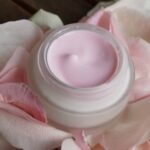 By Kelly A. Bonner, Alex W. Karasik, Gerald L. Maatman, Jr., and Jennifer A. Riley
By Kelly A. Bonner, Alex W. Karasik, Gerald L. Maatman, Jr., and Jennifer A. Riley
Duane Morris Takeaways: In a significant win for fashion and beauty retailers in the privacy class action space, in Warmack-Stillwell v. Christian Dior Inc., No. 1:22-CV-04633, 2023 U.S. Dist. LEXIS 22926 (N.D. Ill. Feb. 10, 2023), an Illinois federal court held that an exemption to the Illinois Biometric Information Privacy Act (“BIPA”) for data captured from a patient in a health care setting barred proposed class action claims alleging that luxury giant Christian Dior Inc.’s (“Dior”) virtual try-on tool (“VTOT”) violated the BIPA.
Businesses in Illinois, particularly online fashion and beauty retailers, can use this ruling to attack BIPA claims involving VTOT technology.
Case Background
As discussed in our previous publications, lawsuits involving BIPA claims and eyewear have been dismissed under one of BIPA’s statutory exemptions, which in relevant part excludes from its definitions of biometric identifiers and biometric information: (1) information captured from a patient in a health care setting; or (2) information collected, used, or stored for health care treatment, payment, or operations under the federal Health Insurance Portability and Accountability Act of 1996, including prescription lenses, non-prescription sunglasses, and frames meant to hold prescription lenses.
Plaintiff alleged that Dior maintained a VTOT feature on its website that collected users’ facial geometry data without first obtaining written consent or informing users of the purpose and length of time that their data was being collected in violation of Section 15(b) of BIPA. Plaintiff also alleged that Dior failed to provide a publicly available data retention and destruction schedule, as required by Section 15(a) of BIPA.
Dior moved to dismiss Plaintiff’s complaint on the basis that the BIPA’s health care exemption applied to non-prescription sunglasses, such as the ones sold by Dior and which the plaintiff alleged that she tried on with the VTOT technology, and thus precluded Plaintiff’s claims.
Plaintiff countered that the sunglasses were fashion accessories; Dior’s website was not a health care setting; and Dior’s consumers were not patients. Plaintiff also sought to distinguish prior decisions applying the BIPA’s health care exemption as focusing on the VTOT technology being used for prescription glasses, akin to optometrist fittings, and not in connection with the purchase of luxury sunglasses. Id. at *8.
The Court’s Decision
The Court granted Dior’s motion to dismiss under Rule 12(b)(6). First, the Court explained that Plaintiff qualified as a “patient in a health care setting” under the dictionary definition of the term “patient,” and that Dior’s VTOT feature “facilitates the provision of a medical device that protects vision.” Id. at *8. Similarly, the Court held that use of the VTOT technology constituted “health care,” which the dictionary defined as “efforts made to maintain or restore physical, mental, or emotional well-being especially by trained and licensed professionals.” Id. at *9.
In addition, the Court reasoned that the relevant test was “not a user’s subjective understanding, but rather an objective application of the text of the exemption.” Id. at *8-9. The Court opined that the outcome of the analysis should not change if a consumer uses the VTOT in search of primarily stylish sunglasses rather than protective ones.
Plaintiff attempted to distinguish Dior’s website from a “health care setting” by arguing that “[a]n artist prepping a canvas is not providing a health care service if they use a scalpel instead of an Xacto knife.” Id. at *9. As to that point, the Court concluded that the VTOT feature facilitated the purchase of sunglasses to wear on one’s face and protect one’s eyes, thus performing the product’s intended medical function rather than an unconventional purpose.
Similarly, the Court rejected Plaintiff’s attempts to analogize her case to BIPA suits against blood plasma centers, in which courts rejected application of the health care exemption. Even if the cases applied the same definitions of “health care” and “patient,” the Court concluded that the removal of plasma for commercial purposes is not “health care because the purpose — at least from the plasma donors’ perspectives — was not to ‘maintain or restore physical, mental or emotional well-being’; it was to get paid.” Id. at *11.
Finally, the Court notably denied Dior’s motion to dismiss under Rule 12(b)(1), rejecting Dior’s argument that Plaintiff failed to allege an injury-in-fact sufficient for Article III standing. The Court concluded that Plaintiff sufficiently alleged an injury-in-fact under Section 15(a) “because “unlawful retention of a person’s biometric data is as concrete and particularized an injury as an unlawful collection of a person’s biometric data.” Id. at *11.
Accordingly, the Court granted Dior’s motion to dismiss on Rule 12(b)(6) grounds, but rejected Dior’s Article III standing argument and denied its motion based on Rule 12(b)(1).
Implications for Retailers
The Court’s decision in Warmack is a solid victory for fashion and apparel retailers, and indicates that courts are willing to expand the BIPA’s healthcare exemption to more retail-oriented environments, and adopt a plain reading of the statue rather than seeking to discern legislative intent. This ruling could have significant implications for personal care products retailers, especially those who utilize VTOT features to assess skin complaints such as aging, hyperpigmentation, and recommend treatments, and whether those defenses will draw regulatory scrutiny for purposed “drug” claims.
In the meantime, retailers should stay abreast of biometric data privacy laws in Illinois and beyond, and ensure that their privacy policies stay current with evolving nationwide legislation.



